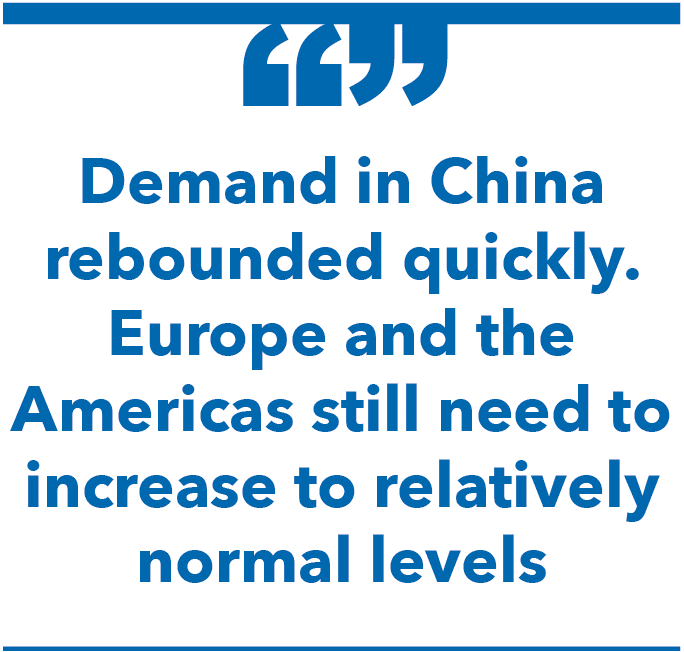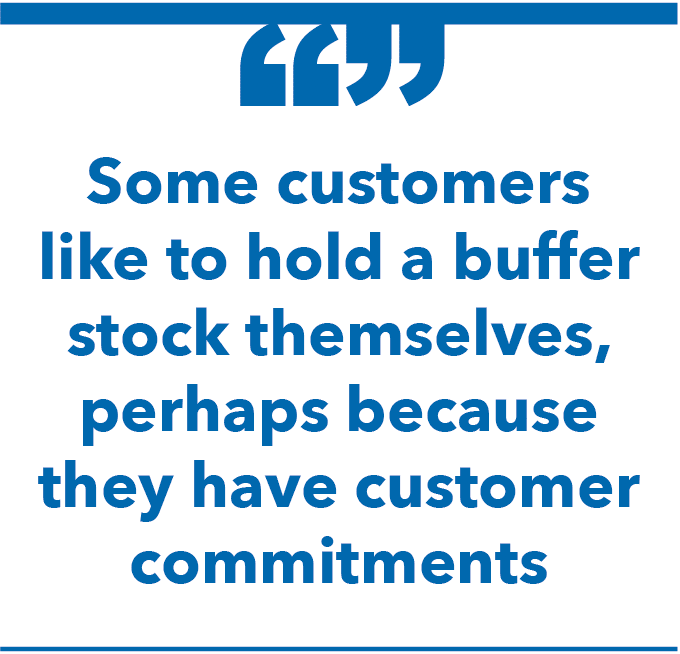From transport and component pricing, to innovation and growth potential, Mouser’s Mark Burr-Lonnon and Graham Munson explore the next 18-months.
Reader interviews (May ESUK) suggest the pandemic has significantly increased air cargo costs with the price of a Boeing 747 jumping from $400K to $1.3M. How is Mouser in Europe managing carriage costs and are distributors generally passing costs to clients?
We are currently experiencing increased air cargo costs. There are approximately 25 per cent fewer cargo flights, so that impacts available capacity, which in turn attracts a surcharge. Despite these surcharges, we are not passing them to our customers, having decided to absorb them. Across the distribution industry, some have opted to pass additional costs to customers.
As air freight capacity increases, surcharges will disappear. There are signs that will happen soon. We have close working relationships with our primary shipping organizations. Our leading US shipper is UPS, FedEx is our primary shipper internationally, and we also use DHL. The fact we have maintained full operations and the electronics industry has kept going these past three months means shipping volumes are near normal, something our shippers are keenly aware of.
 Have delivery times been affected over recent months? Are certain component types more susceptible to longer lead times than others?
Have delivery times been affected over recent months? Are certain component types more susceptible to longer lead times than others?
 After Chinese New Year the pandemic prevented the normal return to work, leading to extended lead times. We’ve seen lead-time extensions and allocation for anything connected with medical devices such as sensors and connectors. MLCCs, tantalum capacitors and displays are all experiencing longer lead times, which always introduces the chance of allocation. Any modular product using many tens of products is likely to encounter component shortages or longer lead times on at least one of its kitting list.
After Chinese New Year the pandemic prevented the normal return to work, leading to extended lead times. We’ve seen lead-time extensions and allocation for anything connected with medical devices such as sensors and connectors. MLCCs, tantalum capacitors and displays are all experiencing longer lead times, which always introduces the chance of allocation. Any modular product using many tens of products is likely to encounter component shortages or longer lead times on at least one of its kitting list.
From our perspective, demand in China rebounded quickly. Europe and the Americas still need to increase to relatively normal levels, although that situation changes daily. As our industry restarts, particularly in hard hit markets like automotive, we could experience a demand surge, potentially leading to further allocations. Having said this, Mouser always invests in high inventory to ensure we have the parts customers need. Our goal is to help customers avoid long lead times which is particularly important now. We work closely with suppliers to ensure we have parts in stock and ready to ship.
Are component prices fluctuating and what are your pricing predictions for the second half of 2020?
Despite allocations, we’ve not experienced too many price rises. Manufacturers realise they have to remain competitive and price increases can often lead to loss of market share. Many look at the global market before making such decisions. We’ve seen the roller-coaster of demand oscillating between geographical regions: as one region goes down, another rises. Our viewpoint is based on the engineering level of component demand and against production levels of inventory. Those seeking production volumes may have experienced some price changes. The market rebound will be a susceptible period. Critical trends such as 5G will drive significant demand, something no supplier wishes to miss. Nobody is sure when that surge will occur. It might not happen this year, but it will happen. Pricing is always dependent on the market, a buyers’ market or suppliers’ market, something suppliers know well.
When a customer places multiple orders with Mouser do they prefer individual shipments or a single consignment?
Customers can choose how to receive an order. We can ship when the whole order is complete or ship the parts immediately available and the rest as they become available. It depends entirely on the customers preference.
 How can readers smooth their supply chain and what are your recommendations to prepare for anticipated extending lead times?
How can readers smooth their supply chain and what are your recommendations to prepare for anticipated extending lead times?
 We provide availability schedules for components and customers can schedule their orders too. Not every customer realises we can schedule deliveries. If a customer creates a schedule when they place an order, they know they have products coming. Our substantial available stock holding, currently $800m, helps keep customers supplied. Any customer can schedule orders, typically covering 12-months. Shorter or longer periods are good too, whatever works for the customer.
We provide availability schedules for components and customers can schedule their orders too. Not every customer realises we can schedule deliveries. If a customer creates a schedule when they place an order, they know they have products coming. Our substantial available stock holding, currently $800m, helps keep customers supplied. Any customer can schedule orders, typically covering 12-months. Shorter or longer periods are good too, whatever works for the customer.
We’re very good at supplying small to medium volumes. For higher volumes, we usually guide customers to our price and availability tool. Communication is another key aspect of a smooth supply chain. We frequently talk to key customers about the supply chain, lead times and other factors impacting supply. Many customers use Mouser as a facilitator and expect us to understand their industry and market, which we do. We enjoy very close relationships with our top 50 suppliers so we can advise customers on events which might impact order schedules.
Would you suggest readers use more buffer stock or pack and hold facilities to ensure pricing and availability?
Again, this is a matter of customer choice. Some customers like to hold a buffer stock themselves, perhaps because they have customer commitments. For many small to medium-sized companies, our high stock levels mean they often don’t need to hold any buffer. If they are a high-volume customer, they may choose to buffer stock to ensure supply.
Finally, how do you see the European electronic component distribution sector performing in the next 18-months?
We anticipate a slow summer, with European holidays a significant influence. As businesses emerge from lockdown and recommence production, we can’t predict if they will push for usual summer holidays or not. September will be an essential indicator. If orders increase in September it will be good. If not, there is cause for concern. In no time, we’ll be in December which is a quiet month for the electronics industry. However, 2021 will undoubtedly be a good year. Pent up demand in Europe includes 5G, IoT and, hopefully, the return of automotive. Next year will be buoyant because of what happened this year. One supplier has witnessed a wave of innovation during lockdown, with those projects emerging as we head out of 2020.
